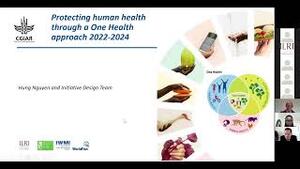
Socio-economic factors influencing biosecurity measures of livestock producers in Japan
Abstract
Purpose: In Japan, the Standard of Rearing Hygiene Management (SRHM), which stipulates biosecurity measures for livestock producers to comply with, was strengthened in 2011, after outbreaks of foot-and-mouth disease and avian influenza. However, some producers still do not comply with some items in SRHM. The present study aims to understand socio-economic factors influencing hygiene practice of producers.
Methods: Hokkaido Prefecture, the principal agricultural production area, and Saitama Prefecture, peri-urban areas adjacent to Tokyo, were selected as study sites. Participatory appraisals were conducted with dairy, beef cattle, pig, layer, broiler, and sheep producers to understand their views on the factors influencing hygiene practice. Questionnaires were designed based on these results, and postal surveys were conducted. Only for broiler producers, country wide survey was conducted, because the majority was enterprises operating in multiple prefectures. A survey for sheep was conducted only in Hokkaido. After univariate statistics, four multivariable generalized linear models each for both sites and all the species were performed for socio-demographic, farm management, knowledge, and hygiene associated factors, respectively, selecting proportion of SRHM items complied (compliance rate) as response variable.
Results: As the items of SRHM are different among livestock species, simple comparison cannot be performed. However, the mean compliance rate was highest in broiler producers (91.7%, preliminary), and layer (64.8% in Hokkaido and 65.2% in Saitama), pig (75.4% and 53.6%), and sheep (66.1%) producers followed. The rate tended to be lower among dairy (61.5% and 56.0%) and beef cattle (59.1% and 57.0%) producers. Only in pigs, compliance rates were significantly different between two sites. Multivariable statistics found that the factors related with a capacity of owner or farm, knowledge on animal health, and attitude for hygiene were associated with compliance rate for all species.
Conclusions: Communication of hygiene knowledge and supports for producers with limited capacity may improve biosecurity further.
Relevance: This is relevant to biosecurity.
Citation
Makita, K., Nakahara, Y., Watanabe, T., Tamura, Y., Ito, H. and Asakura, S. 2015. Socio-economic factors influencing biosecurity measures of livestock producers in Japan. Presented at the 14th Conference of the International Society for Veterinary Epidemiology and Economics (ISVEE), Merida, Yucatan, Mexico, 3-7 November 2015. Nairobi, Kenya: ILRI.










